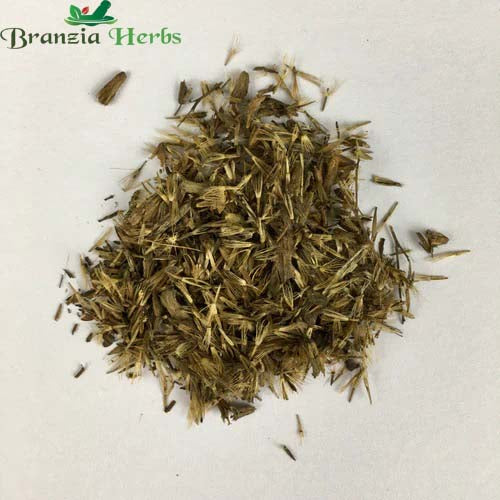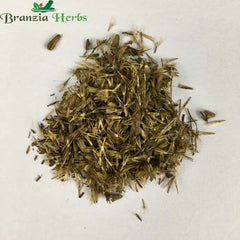Stevia (Stevia rebaudiana) is a herb known for its sweet leaves, which are used as a natural, zero-calorie sweetener. It is a popular alternative to sugar and artificial sweeteners. Here’s a comprehensive guide on Stevia Sweet Leaves Herb Seeds, including their characteristics, benefits, and planting care:
Characteristics
-
Appearance:
- Seeds: Stevia seeds are small, dark brown to black, and very fine, often requiring careful handling. They are about 0.5-1 mm in diameter.
- Plant: Stevia is a compact, bushy herb with bright green, serrated leaves. It typically grows up to 60-90 cm (24-36 inches) tall and produces small, white or light purple flowers.
-
Plant Size:
- Height: Grows to about 60-90 cm (24-36 inches) tall.
- Spread: Can spread up to 45 cm (18 inches) wide.
Benefits
-
Culinary Uses:
- Natural Sweetener: Stevia leaves contain steviol glycosides, which are 50-300 times sweeter than sugar but contain no calories. It is used to sweeten beverages, desserts, and various dishes.
- Healthier Alternative: Ideal for those looking to reduce sugar intake or manage blood sugar levels.
-
Medicinal Uses:
- Blood Sugar Management: Stevia has been shown to have a negligible impact on blood glucose levels, making it suitable for diabetics.
- Digestive Health: It is traditionally used to aid digestion and reduce bloating.
-
Cosmetic Uses:
- Skin Care: Stevia’s antioxidant properties may benefit the skin, though it is less commonly used in skincare compared to other herbs.
Planting Stevia Seeds
-
Preparation:
- Seed Treatment: Stevia seeds do not typically require special treatment before planting, but they are very tiny and can benefit from being mixed with sand to help with even sowing.
-
Timing:
- Optimal Season: Plant stevia seeds indoors 6-8 weeks before the last frost or directly outdoors after the last frost when the soil temperatures are warm and consistently above 15°C (60°F).
-
Soil and Location:
- Soil Type: Prefers well-drained, loamy or sandy soil with a slightly acidic to neutral pH. Ensure good drainage to prevent root rot.
- Location: Choose a sunny location with full sun exposure. Stevia thrives in warm climates but can be grown in containers indoors or in greenhouses in cooler areas.
-
Planting:
- Sowing Seeds: Sow seeds on the surface of the soil, as they require light to germinate. Lightly press them into the soil but do not cover them. Space seeds or seedlings about 30 cm (12 inches) apart.
- Germination: Seeds typically germinate within 14-21 days. Keep the soil consistently moist but not waterlogged during this period.
-
Watering:
- Initial Care: Water the soil thoroughly after planting and keep it moist until seedlings are established.
- Ongoing Care: Water regularly, especially during dry periods. Stevia prefers slightly moist soil but can tolerate brief dry spells. Avoid overwatering.
-
Fertilizing:
- Nutrients: Stevia benefits from a balanced fertilizer or compost. Fertilize every 4-6 weeks during the growing season to support healthy growth. Avoid excessive nitrogen, which can lead to excessive foliage growth at the expense of sweet leaves.
Care and Maintenance
-
Pruning:
- Trimming: Regularly trim or pinch back the tips of the plant to encourage bushier growth and prevent it from becoming leggy. Remove any dead or damaged leaves.
-
Pest and Disease Management:
- Monitoring: Stevia is generally resistant to pests but can be affected by common garden pests like aphids and spider mites. Monitor for pests and diseases such as powdery mildew.
- Control: Use organic pest control methods and ensure good garden hygiene to prevent disease.
-
Harvesting:
- Timing: Harvest leaves once the plant is well-established and has plenty of foliage. The best time to harvest is just before flowering when the leaves are at their sweetest.
- Method: Use scissors or pruning shears to cut stems. You can also harvest and dry leaves for later use in cooking and baking.
-
Protection:
- Winter Care: In colder climates, consider growing stevia in containers that can be moved indoors or use row covers and mulch to protect outdoor plants during winter.
Environmental Considerations
- Climate Adaptation: Stevia is best suited to warm climates but can be grown in cooler areas with the help of indoor or greenhouse environments.
- Sustainability: Ensure that planting practices are sustainable and adhere to local regulations regarding agriculture and conservation.
Summary
Stevia Sweet Leaves Herb Seeds offer a natural, zero-calorie alternative to sugar with numerous culinary and medicinal benefits. By following proper planting and care guidelines, you can successfully grow stevia and enjoy its sweet leaves in a variety of recipes. Stevia thrives in sunny, well-drained conditions and requires consistent moisture for optimal growth. Its unique sweetening properties make it a valuable addition to any herb garden or kitchen.






